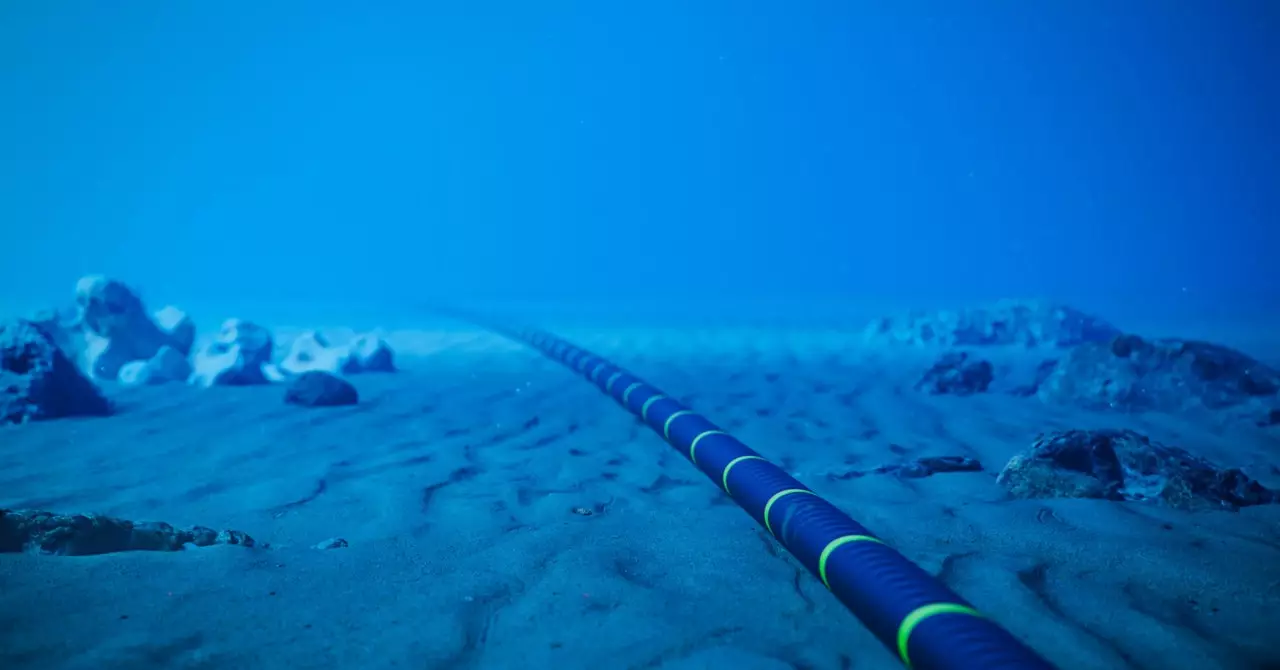Meta, the tech behemoth formerly known as Facebook, has unveiled a groundbreaking initiative called the Waterworth Project, which aims to construct a staggering 50,000 kilometers of undersea cable aimed at enhancing internet connectivity across five continents. This strategic move reflects Meta’s ambition not just to expand its digital infrastructure but also to gain greater control over its services—especially as it increasingly leans into artificial intelligence (AI) technologies. Given that over 95% of intercontinental internet traffic is carried by submarine cables, the significance of this project cannot be underestimated.
Project Waterworth represents a multi-billion dollar, multi-year investment designed to enhance the robustness and scalability of global digital networks. According to Meta, this endeavor will open up three new oceanic corridors brimming with high-speed connectivity, which is essential for fostering innovation in AI on an international scale. This vision was initially highlighted by entrepreneur Sunil Tagare last fall and has since generated considerable buzz in technological circles. The cable, remarkably longer than the Earth’s circumference, is set to become the longest undersea cable ever constructed, thus asserting Meta’s leadership in this vital sector.
With anticipated landing points in key regions such as India, the United States, Brazil, and South Africa, the implications for global connectivity and economic opportunity are profound. In particular, the project’s potential to accelerate India’s rapidly growing digital infrastructure is noteworthy. Meta has stated that Waterworth will bolster India’s ambitions to elevate its digital economy, suggesting that the country is poised to benefit significantly from this investment.
The project gained notable political attention as well, receiving a joint endorsement from U.S. President Donald Trump and Indian Prime Minister Shri Narendra Modi. The leaders’ recent statement articulated their shared commitment to enhancing undersea technologies, explicitly welcoming the Waterworth Project. This governmental support underscores the strategic importance of the initiative not only for Meta but also for international relations, especially between the United States and India. Such cooperation signifies a broader commitment to fostering connectivity in the Indian Ocean and beyond.
Meta’s undersea cable network will deploy advanced architecture comprising 24 fiber pairs, designed to maximize deep-water routing capabilities, thereby allowing the cable system to reach depths of up to 7,000 meters. This represents a significant technological leap, especially when coupled with enhanced burial techniques intended to safeguard the cable from potential damage caused by ship anchors and other external threats. The importance of such innovations cannot be overstated, as previous projects have faced major hurdles due to environmental factors and underwater hazards.
In addition to promoting connectivity, Meta’s technical advancements highlight the company’s commitment to fostering a secure digital landscape. With an expansive ecosystem encompassing services like Facebook, Instagram, and WhatsApp—which contribute as much as 10% of fixed internet traffic globally—it has become increasingly crucial for the organization to prioritize the stability and security of its network infrastructure.
While Project Waterworth is a bold statement of intent, it places Meta in direct competition with heavyweights in the tech industry, particularly Google, which boasts approximately 33 submarine cable routes, many of which it fully owns. Other major players, including Amazon and Microsoft, are also making notable investments in undersea cable technology, although they often operate through shared interests or capacities on existing networks. As Meta forges ahead with Waterworth as its first wholly-owned submarine cable project, it will be crucial for the company to translate its ambitions into actionable results that outpace its rivals.
The Waterworth Project marks a pivotal moment in Meta’s journey toward building a more interconnected world. By investing in a vast undersea cable infrastructure, Meta aims not only to enhance its service delivery but also to play a vital role in the technological evolution of the digital landscape globally. As the project unfolds, its long-term impact on global connectivity, especially in emerging markets like India, will be closely watched. The global digital highways that Waterworth seeks to lay down may well become the backbone of future innovations in AI and beyond—making this project an endeavor of enormous consequence.

